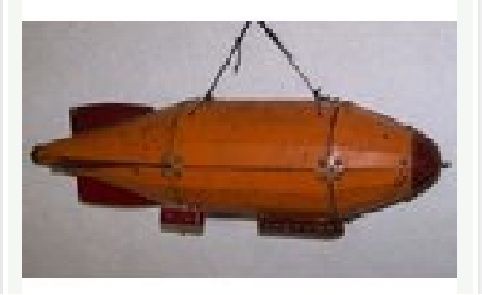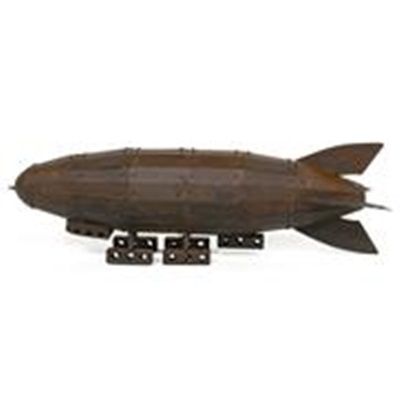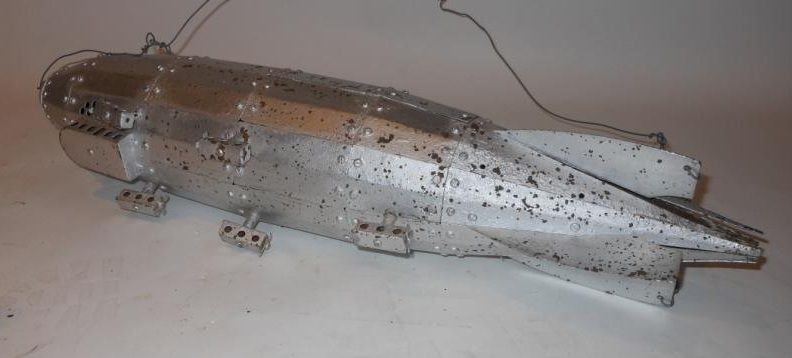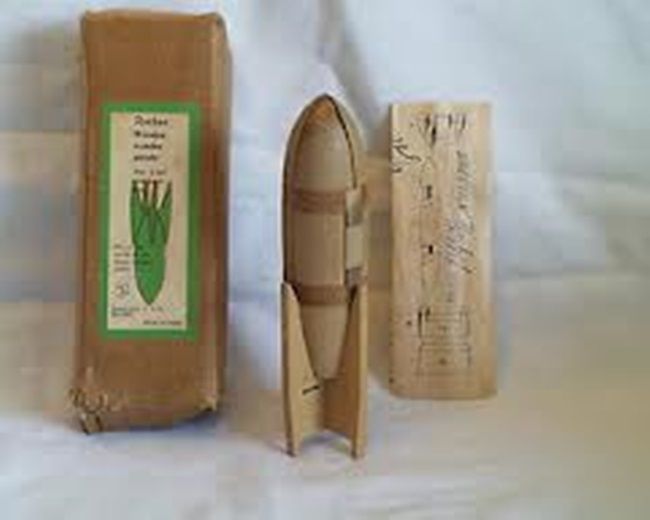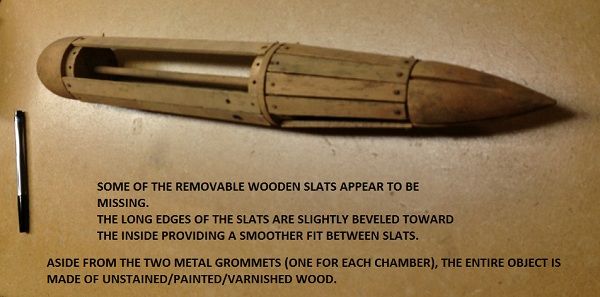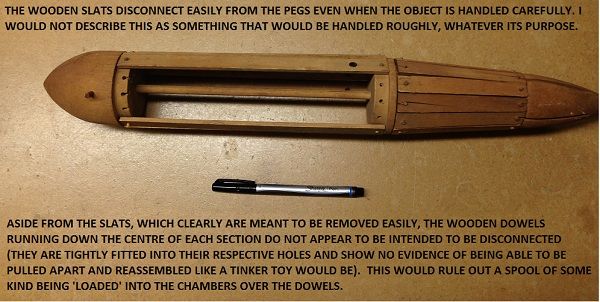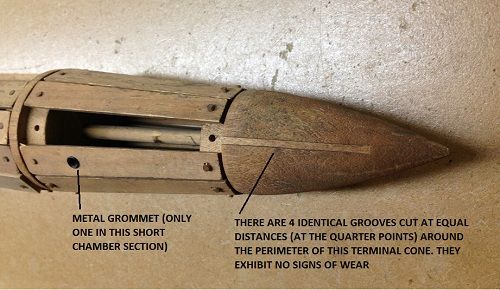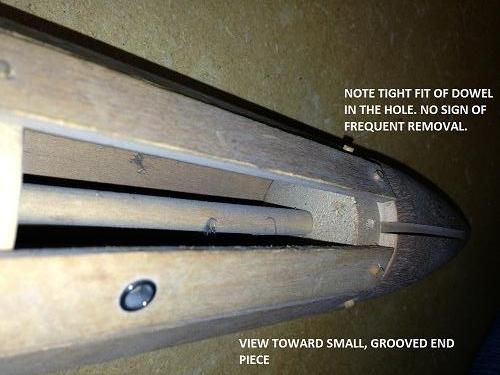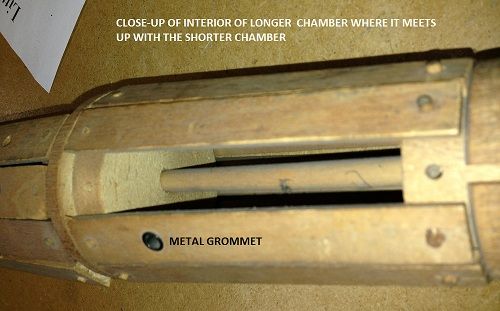I agree with KC, and believe it is a “weaving shuttle” that was made to hold two (2) different colors or types of thread or yarn.
Please note via the following picture that:
If the ball-point pen is 5 ½” in length then the “shuttle” is roughly 18” long and 2 ¾” to 2 7/8” in diameter.
And my assuming that it is a shuttle, the following is only my learned opinion on its construction and use, to wit:
To hold the unit together, the dowel pin “axel” would have to be firmly attached to and extend from one “end cap”, thru the divider “partition”, to the other “end cap”. The wood wheels would be “freely” rotating on the “axel”.
To “load” the shuttle “bobbin” the slats would be removed from the wood wheels and the “weft” thread or yarn wound around the bobbin’s “axel” …. and when the slats were replaced the end of the “weft” thread or yarn would “exit” thru the metal grommet(s).
The only way the thread or yarn could be “unwound” from the bobbin’s “axel” would be to “pull-it” in the direction of either “end cap”, which would permit the “slatted” enclosure to rotate on the “axel”.
Only one (1) of the 4 identical grooves in the “end cone” would have been used to hold the “weft” thread in place, ….. to keep it from unwinding from the bobbin, …. when the shuttle was pushed or pulled between the “warp” threads.
Weaving is a method of fabric production in which two distinct sets of yarns or threads are interlaced at right angles to form a fabric or cloth. The longitudinal threads are called the warp and the lateral threads are the weft (woof) or filling (threads). http://en.wikipedia.org/wiki/Weaving
Thanks for the input. I will revisit the shuttle theory and pass along your observations to some "experts"
So far everyone contacted about the shuttle theory says it would not work for a number of reasons. A shuttle must be able to travel smoothly across a plane of yarns or strings and they usually are designed so that one side is flat-ish to keep it situated in a particular way. This object doesn't seem ideal for that. Also, even the more primitive shuttles we've looked at have a spool that will rotate easily, plus we have never seen a photo of one that has all those removable slats which in it's present state fit quite loosely. We have not been able to find a photo of a shuttle remotely like this as a matter of fact. We also have never seen one that is so asymmetrical, they are usually completely symmetric so they behave the same traveling in either direction.
Also the little peg sticking out near the blunt end. Inexplicable for the shuttle theory.
My friend seems pretty convinced that the thing does NOT turn or come apart, but you are correct, wood changes shape and size over time.
Thank you again, we will try to envision your explanation more between us and the "experts".
For what it's worth, my first impression was a multi-thread shuttle also.
ETA;
The end caps and the center disc appear to be milled from a single piece of wood each. The area where the slats attach are NOT separate from the elements adjacent. In other words these elements are comprised of 3 pieces of wood rather than 7, (2 at each end, 3 in the middle)




